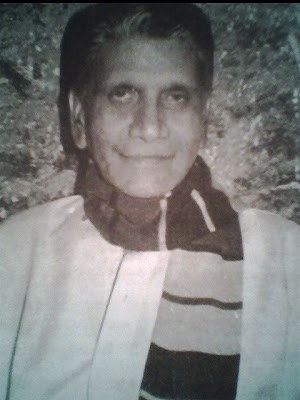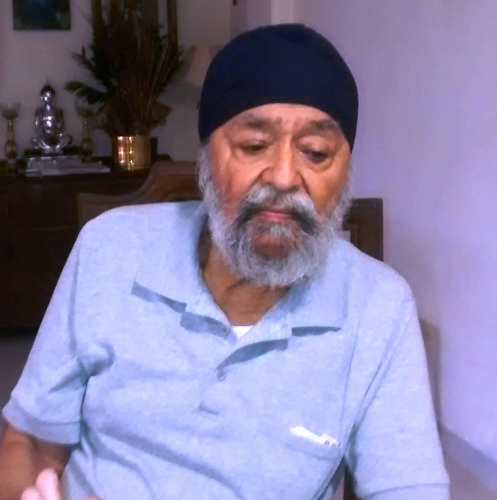Do Bigha Zamin, a 1953 production, directed by Bimal Roy, was one of the earliest films which brought into existence the parallel cinema movement in India. The neo-realist overtures in the film were inspired by Bimal Roy's fascination after watching Vittorio De Sica's Bicycle Thieves, the previous year in the International Film Festival in Mumbai.
The film was based on Rickshawalla, a short story written by the famous composer, Salil Chowdhury. The story talked about the plight about a farmer who was forced to pull rickshaws in Kolkata in order to save his land in his native village. The name of the film though was taken from Rabindranath Tagore’s famous poem “Dui Bigha Jomi.”
The story revolves around the rural Indian countryside which has faced hardships over quite a few years as there has been no rainfall and the village has been hit by a famine. The film begins on a positive note as the rain gods listen and there is a downpour which is celebrated by the farmers. Shambhu, the protagonist of the story played by Balraj Sahni, who stays with his wife, Paro, played by the evergreen Nirupa Roy; his son Kanhaiya and his father, owns two bighas of land which is the only way of sustenance for his family. But the problem arose when the village zamindar, Harnam Singh, decided to construct a mill on his vast parcel of lands, which would bring work and prosperity to the village and right in the middle of his land lay Shambhu’s meagre two bighas. Harnam Singh was confident that he could buy off Shambhu’s land thereby putting his plans for the mill in motion. Considering the fact that Shambhu had borrowed money from him in the past, he had leverage over him and could strongarm him into selling the land. When Shambhu declined, Singh asked him to pay the debt that he owed him within the next day or else see his land get auctioned off. Shambhu returned home and with the help of his son and his father, Gangu, managed to calculate the debt, which amounted to 65 rupees. He sells off a lot of his possessions including his wife’s gold earrings. When he returned to pay the debt, he found out that the accountant had mismanaged the books and set the debt amount to 235 rupees. Shambhu’s protests that his father worked most of those debts off, fell to deaf ears and was asked to appear before court. His lack of education and understanding of financial matters led him to lose the case. The court's orders to return the money within a stipulated period of three months, makes Shambhu try all avenues but to no luck. He finally listens to a friend and decides to go to Calcutta where he could get a job and earn the money and save his land even though his wife is pregnant. His son Kanhaiya forces his hand to take him when he finds him hiding on the train to Calcutta and both father and son embark on the journey.
This film’s neo-realist form were pretty evident given the time it was made. Italian neo-realism was a movement which gathered force because the films that were being made during that time in Italy did not portray anything real. There was a clear class divide in the way the films were being made and catered for. But De Sica’s Bicycle Thieves not only portrayed the weariness of the old generation through the father where he represented all the hopelessness and the aftereffects of the fascist regime but the freshness of the new generation was also portrayed through the son who are not afraid and not ready to lose hope even in the face of adversity. In India, films have always been seen as a political tool. Even during the colonial rule, the mythological and the devotional films were used to bring the people together with the help of icons. These icons were mythologized through their self-sacrificing element and their renunciation of familial ties to achieve greatness thereby proving to the people how they needed to come out of their homes and become a part of the larger struggle. With the advent of India’s independence, the films changed their tune a little. The idea of nation building needed to be advanced. The mythological and the devotional films took a different form and the ‘social’ films came into existence. The idea of the land being the sole provider was clearly evident in the film. India being primarily an agrarian economy, the love for one’s land with it being the sole provider for the family is shown in the film. The curse of the zamindari system is also shown in it’s most banal sense. Bimal Roy very cleverly, brought out the evils of India’s illiteracy through the court scenes and the way the systemic exploitation of the agrarian classes is done. Another controlled shift that is painted in the films of this time are the construction of structures.
Do Bigha Zamin takes the help of powerful imagery and brilliant acting to portray the growing pains of the new nation and how there remained a strong need to create a balance between the rising working class and the declining agrarian class, thereby urging for a change in the social order.
Tags
About the Author

Utsha Sarkar is pursuing his post-graduation in Media and Film Studies from Manipal Institute of Communication. He is a cinema student with a penchant for words. Film theory interests him to the core. He is extremely opinionated when it comes to a discussion in social politics and the idea of cinema being more than just a narrative.







.jpg)


